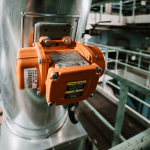How EV Motors Work
Electric vehicles (EVs) have been rapidly growing in popularity in recent years, and it’s no secret that they are changing the landscape of the automotive components. To fully understand how these vehicles work, you’ll need to understand the motors that they use. In this blog, we’ll dive into how EV motors work, breaking down the different types and what powers them.
What Powers the Motors
Electric vehicle motors are powered by electricity which is stored in the car’s battery pack. These batteries store electric energy and release it when needed to propel the vehicle forward. That energy is then sent to the motor controller, which regulates the flow of electricity to the motor to control the speed and power of the vehicle.
How They Work: AC or DC?
Electric vehicle motors can be categorized into two main types: alternating current (AC) motors and direct current (DC) motors. The choice between these two technologies has a significant impact on an EV’s performance and efficiency.
- Alternating Current (AC) Motors:
- AC motors use alternating current, where the flow of electricity periodically reverses direction.
- In AC motors, there are two primary types: asynchronous (induction) motors and synchronous motors.
- Asynchronous motors are commonly used in EVs due to their simplicity and reliability. They rely on electromagnetic induction to create a rotating magnetic field, which in turn drives the motor’s rotor, producing motion.
- Synchronous motors, on the other hand, operate at a constant speed and are often used in more high-performance electric vehicles.
- Direct Current (DC) Motors:
- DC motors use direct current, where electricity flows in a single direction.
- DC motors are known for their high torque at low speeds, making them suitable for many EV applications.
- Brushed DC motors, which have physical brushes that make contact with the commutator, are less common in modern EVs due to their higher maintenance requirements.
- Brushless DC motors, on the other hand, have no brushes and are more efficient, reliable, and widely used in EVs.
The Different Types of Electric Motors
The main difference between AC and DC lies in the direction of electrical current flow. AC periodically changes direction, while DC flows in a single direction. AC motors are better suited for long-range efficiency, while DC motors excel in providing high torque at low speeds. The choice of motor type depends on the specific requirements of the vehicle and its intended use.
Apart from the AC and DC motor classifications, there are various subtypes of electric motors used in electric vehicles:
- Permanent Magnet Motors: These motors use powerful permanent magnets in the rotor, enhancing efficiency and performance. Tesla, for example, uses permanent magnet synchronous motors in many of its EV models.
- Induction Motors: As mentioned earlier, induction motors are prevalent in EVs due to their simplicity and reliability. They require no brushes and have fewer wear-and-tear components.
- Switched Reluctance Motors: These motors are gaining attention for their simplicity and robustness. They don’t use permanent magnets or field windings and can operate effectively over a wide range of speeds.
Whether it’s an AC or DC motor, each has its own set of advantages and is chosen based on the vehicle’s requirements. As technology continues to evolve, we can expect even more innovations in electric motor design, contributing to the widespread adoption of electric vehicles in the near future.
Interested in learning more about electric vehicles? Click here to explore our insights and resources.










